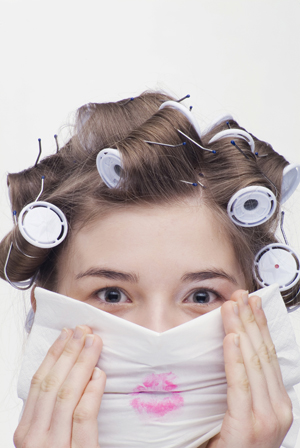
The average woman applies 515 chemicals to her face each day — makeup, perfumes, lotions, mascara and other beauty products — and these can make her sick, according to a British study.
by Mary Budinger —
The average woman applies 515 chemicals to her face each day — makeup, perfumes, lotions, mascara and other beauty products — and these can make her sick, according to a British study.
Here are the average number of ingredients the study found in various products:
- Perfumes: 250 ingredients
- Lipstick: 33
- Body lotion: 32
- Mascara: 29
- Hand moisturizer: 11
Many cosmetic products used by women contain harmful ingredients like aluminum, synthetic dyes, fragrances and parabens. Many of the chemicals in makeup have been linked to skin irritation, hormone imbalances and cancer.
Parabens, for example, are synthetic chemicals used in more than 13,000 cosmetic products. The Environmental Protection Agency states that all parabens — methyl, propyl, butyl — have been proven to interfere with the function of the endocrine system, and these endocrine disruptors are stored in our body’s fatty tissues.
Read the labels
It pays to read labels. According to the Safe Cosmetics Campaign, avoid the following chemicals in cosmetics whenever possible:
- Butyl acetate
- Butylated hydroxytoluene
- Coal tar
- Cocamide DEA/lauramide DEA
- Diazolidinyl urea
- Ethyl acetate
- Formaldehyde
- Parabens (methyl, ethyl, propyl and butyl)
- Petrolatum
- Phthalates
- Propylene glycol
- Sodium laureth/sodium laurel sulfate
- Talc
- Toluene
- Triethanolamine
The Center for Children’s Health and the Environment at Mount Sinai School of Medicine in New York says that endocrine disruptors are suspected of contributing to reproductive and developmental disorders, learning problems and immune system dysfunction in children. Parabens may be a factor in why one out of six children in the United States has a developmental disability.
The European Union recently passed a law banning the use of suspected CMRs — carcinogens, mutagens or reproductive toxins — in any cosmetics sold in the 25-member EU. The major U.S. cosmetics companies that sell abroad have had to reformulate their products to conform to EU safety guidelines, but most have not changed the formulas they sell in America. The U.S. Food and Drug Administration does not review cosmetic ingredients for their safety before they come to market, nor does it have the authority to recall hazardous products.
In lieu of any American governmental oversight, the Safe Cosmetics Action Network partnered with Environmental Working Group and others to develop the “Compact for Safe Cosmetics.” More than 1,000 companies have signed the compact, a pledge to remove hazardous chemicals and replace them with safe alternatives within three years.
Arbonne, Avon, Mary Kay, Maybelline, Melaleuca and Revlon are among the companies that have refused to sign the compact. Just because a cosmetic company may pledge funds for breast cancer research, for example, does not mean they provide products free of ingredients that are suspected or known to cause cancer. The word “natural” is essentially meaningless. Even cosmetics labeled “organic” may contain up to 30 percent nonorganic ingredients. For a complete list of compact signers, see www.safecosmetics.org.
What was once a basic cleansing protocol has turned into a lifestyle of trying the latest and greatest products in an effort to maintain youthful beauty. Many “beauty products” could be more aptly described as invitations to disease and developmentally delayed children.
The beauty industry is not required to disclose every ingredient in its products. For example, you will rarely find phthalates on labels. Phthalates keep your mascara from running, stop your nail polish from chipping and help fragrances linger. But according to the Breast Cancer Fund, hundreds of animal studies have shown that phthalates damage the liver, kidneys, lungs and the reproductive system, primarily of male offspring.
Given the lack of regulations and the plethora of chemicals found in cosmetics, it is smart to check the ingredients before investing in a product.
Sources for this article include: www.telegraph.co.uk/health/, www.sfgate.com/cgi-bin/ and www.naturalnews.com.
Mary Budinger is an Emmy award-winning journalist who writes about complementary and alternative medicine. 602-494-1999.
Reprinted from AzNetNews, Volume 29, Number 1, Feb/Mar 2010.





February 27, 2012
Beauty and Anti-aging, Children and Teens, Women